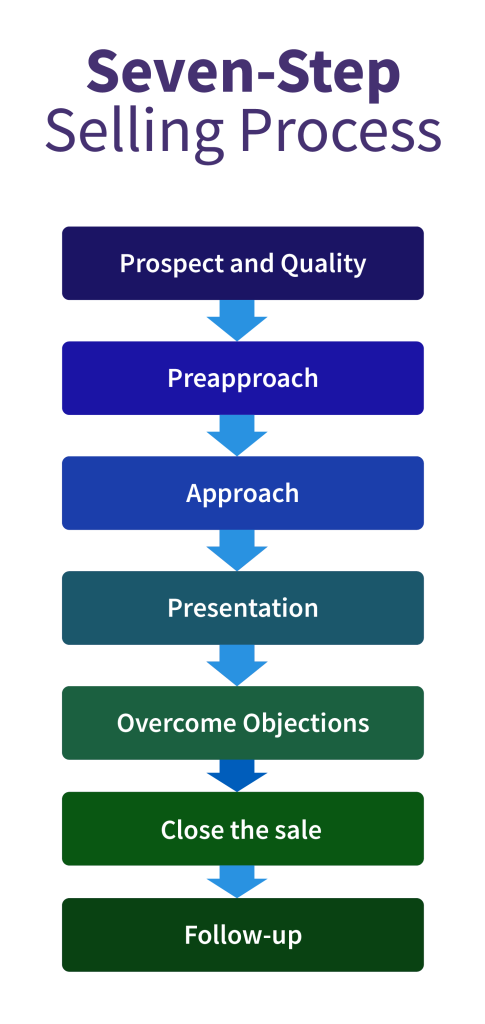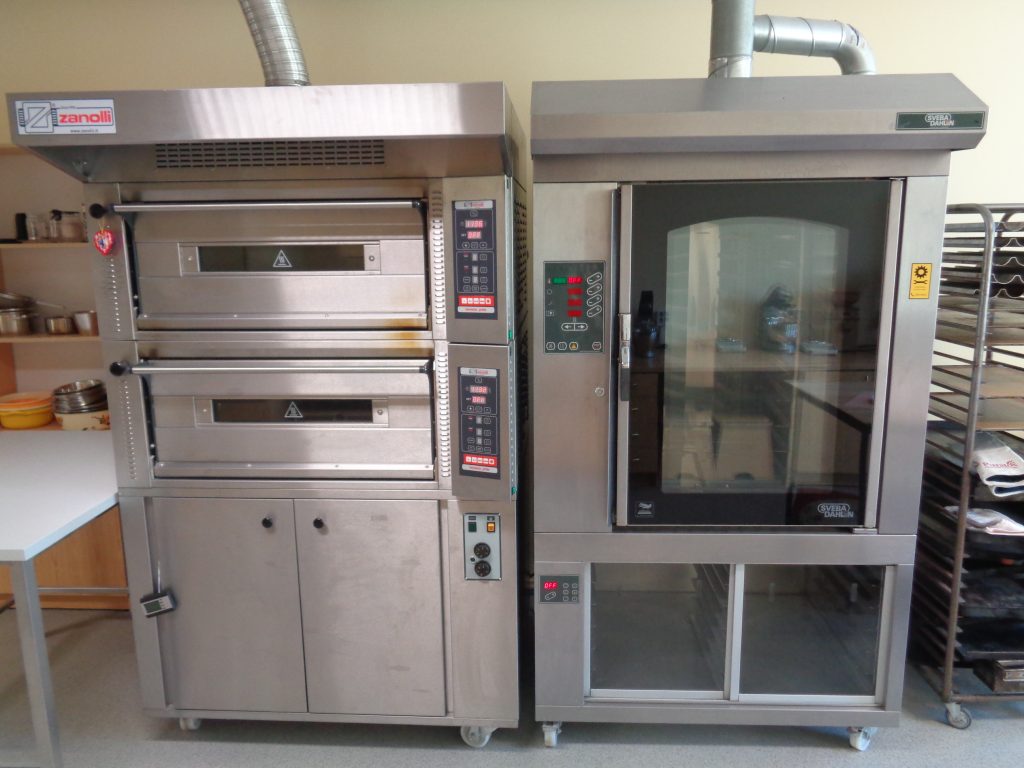3.1 It’s a Process: Seven Steps to Successful Selling
You may have been surprised if someone told you that movie scripts, regardless of the genre, all follow the same basic formula—the same sequence of events—almost down to the minute: after three minutes, the central question of the movie is introduced; after twenty-seven more minutes, the main character will set off on a new path; fifteen minutes more, and something symbolic will happen; and so on (King, 2001). Hollywood has come to learn that this particular structure is the secret to keeping the audience’s attention, earning positive reviews, and selling movies.
In the same way, almost all selling—regardless of the product that’s being sold—follows a particular sequence of steps. It’s a simple but logical framework that has been the accepted model for almost a hundred years (Montcreif & Marshall, 2005). Salespeople have adapted the specifics of the process as culture and technology have changed, but the fact that they’ve followed the same basic model has for so long testifies to its effectiveness. The selling process is generally divided into seven steps that, once you understand them, will empower you to sell virtually anything you want and satisfy your customers: each step of the seven-step process is covered thoroughly in this and the next six chapters so that you can learn the details of each step and how to apply them in various selling situations.

Seven-Step Selling Process (Solomon et al., 2008)
- Prospect and qualify
- Preapproach
- Approach
- Presentation
- Overcome objections
- Close the sale
- Follow-up
When the Seven-Step Selling Process Is Used
Up to this point, you have learned that the sales process is adaptive, which means that each situation may be different and salespeople have to adapt and understand what is important to each customer but in order for a salesperson to use adaptive selling, they must thoroughly understand the steps in the selling process.
Example: The Seven-Step Selling Process in the B2C Market

Let’s say you want to buy a gym membership. Maybe you received a promotional offer in the mail, your friends on Facebook have had good things to say about a particular gym, or you picked this club because it’s close to home. Whatever the reason, you wander in and ask to speak to the membership director who seems to know a lot about the club and what you might be looking for. After some small talk about the fact that you both live in the same apartment complex, they tell you about the gym’s amenities and give you a tour of the facility. Then, you sit down to discuss pricing options and payment plans. If you have any questions or concerns (i.e., “I noticed there are only three tennis courts. Is there usually a long wait to use one?” or “Why aren’t there any kickboxing classes on your class schedule?”), the membership director will attempt to address those. Maybe they will tell you there is occasionally a wait to use the tennis courts at peak times, but you can reserve a spot up to a week in advance, in which case you can get right in. Or maybe they will say that while they don’t have kickboxing classes, they offer Zumba, which is a fun aerobic alternative. If you’re satisfied with their responses, and the price and product meet your needs, you will probably decide to sign a contract. Once you’ve signed, someone from the club will probably follow up with a call in a few weeks to see if you’re satisfied with your experience at their gym, or you may get an e-mail from them with a membership satisfaction survey or a text message about an upcoming event.
The example above is an actual selling situation. Although you may not have realized it while you were reading it, the situation follows the seven-step selling process. Whether you’re buying a gym membership or a car, cell phone service or a new computer, the situation may be different, but the steps in the selling in the selling process will follow the same pattern.
The process isn’t only limited to business-to-consumer sales; it works in the B2B world. It is also the process that IBM will use to sell servers to a corporation, that Accenture will use to sell consulting services to a technology company, or that the Coffee Brewers Company will use to sell espresso machines to coffee shops.
Example: The Seven-Step Selling Process in the B2B Market
Imagine you manage a new restaurant. You get a call from a salesperson who compliments you on the roasted chicken they had at your restaurant last weekend. After some conversation, they ask if you’re satisfied with your commercial ovens.

You have been having some problems with them and have been doing some casual research online. You know that their company is rated as one of the best oven manufacturers, so you tell them: the ovens are over ten years old, they take a long time to heat up, and they sometimes cook things unevenly. “Many older ovens have this problem,” they say. “Would you be interested in learning about the state-of- the-art commercial ovens our company sells?” Since you need a solution for your current ovens, you agree to set up an appointment with the salesperson. When the they arrive, you are impressed that they know so much about your business. They visited your restaurant, reviewed your menu, spoke with some of the wait staff, read reviews on the city magazine web site, and even had some conversations with some of your patrons on Chef’s Blog. They explain that the ovens they sell heat up quickly and use energy more efficiently. They give you an estimate of your annual savings on energy costs if you switched over to their product line.
You’re interested, but you’re concerned that the ovens might not cook food evenly. Ovens are a big expense—what happens if you aren’t satisfied with the product? The salesperson says you can lease an oven for a trial period at no obligation, and they show you reviews from other customers on their company’s web site and on some restaurant industry blogs. You feel like this might help you solve your problem, so you agree to lease the machine for four months. After two months, the salesperson calls to ask if you’ve been satisfied with the product so far, and they offer you a discount if you sign a contract to purchase two ovens in the next ten days. Since you have been happy with the leased oven and checked out the company’s service record online from other current customers, you make the purchase. As in the gym membership example above, this B2B selling situation follows the seven-step framework.
“7.1. It’s a Process: Seven Steps to Successful Selling” from The Power of Selling by Dr. Michelle Clement is licensed under a Creative Commons Attribution-NonCommercial-ShareAlike 4.0 International License, except where otherwise noted.
“7.2. The Seven Steps of Selling” from The Power of Selling by Dr. Michelle Clement is licensed under a Creative Commons Attribution-NonCommercial-ShareAlike 4.0 International License, except where otherwise noted.

